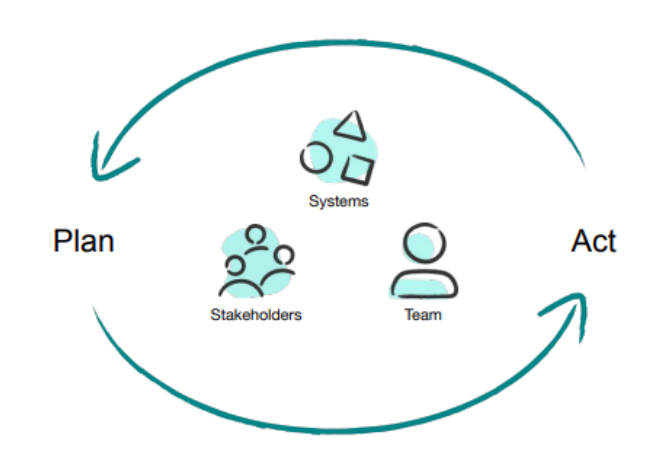Newly Minted: Building an Agile Treasury for Second-Hand Fashion Unicorn Vinted

By Agne Masiulyte, Senior Treasury Director, Vinted, and Esther Goemans-Verkleij, Partner, Treasury, Orchard Finance
With a growing member base of more than 50 million users, Vinted is now the largest online consumer-to-consumer marketplace in Europe dedicated to second-hand fashion and items for the home. Thanks to its rapid international growth, the company soon required a fully functioning treasury department – and this is the story of its creation.
Founded in 2008 in Vilnius, Lithuania, by Milda Mitkute and Justas Janauskas, Vinted is active in 18 markets: Spain, France, Luxembourg, Belgium, the Netherlands, Germany, Austria, the Czech Republic, Poland, Lithuania, the UK, Italy, Portugal, Slovakia, Hungary, Sweden, Canada and the US. Every second of the day, someone lists, sells, buys, swaps or gives away their clothing on Vinted.
The company’s online business model, combined with its fast growth and ongoing expansion ambitions, required a treasury department that would add value and evolve as the business scales up. To achieve this aim, the Vinted treasury team was created at the end of 2020.

A general introduction
Setting up a treasury department
The role of a treasurer is not the same in every company but, overall, the role can be divided into three key responsibilities:
1. Corporate finance management
2. Treasury operations/cash management
3. Financial risk management
In each of these three key areas there are more general, primary responsibilities and potential additional, related, responsibilities. Some of these tasks are highly strategic, such as financing strategy, and some are operational, such as daily cash management. So, the question is how to identify which tasks and responsibilities are required for a company at a certain stage in its development and then how to organise these into manageable and controlled processes. The ultimate goal is that all financial risks within the company are identified, assessed, and managed in such a way that they support the business objectives and strategy.
In addition to the tasks and responsibilities, it is also important to realise that the treasurer is not only a strategic business partner to the CFO but is also a partner for control, tax, accounting, for the business units, and for external parties such as banks and system vendors. Therefore, it is important to explicitly develop not only hard skills but also strong soft skills within the team.
“When setting up a treasury function there is no single blueprint for a perfect organisation,” says Goemans-Verkleij. There are several factors that need to be taken into consideration. The process starts with identifying financial risks that a company is facing throughout the value chain. These are derived from the type of business the company is and the business model being operated.
For example, being a platform company such as Vinted with 100% online business, implies that there are no financial risks related to manufacturing and no inventory to finance but there is FX risk involved when members buy and sell in different currencies. In addition, the leverage and geographical presence are important factors in identifying the financial risks that a company is facing and that a treasury function needs to mitigate. Finally, the culture within the company is key: is there a high-risk appetite for financial risks? Is decentralised responsibility encouraged or is there, perhaps, more desire for a centralised approach?
Together these elements provide input for the building blocks of a treasury team. And, once a treasury function is established, it will mature. It will grow with the business, but it also evolves as a function itself. And, in tandem, there are external factors that continuously impact the speed at which a company can, and will, mature.

Adaptive treasury
With an ambitious growth strategy and/or a challenging, demanding, and volatile external environment, it is clear that treasury maturity is not necessarily a simple roadmap. As such, it is vital that the team, the tools, and processes that are designed and implemented are able to adapt to new circumstances so that a so-called ‘adaptive treasury’ will be built. Goemans explains: “This means that attention to the eventual need for change and a culture for continuous improvement and short feedback loops becomes part of the DNA of the treasury function and team”.
Vinted took this adaptive approach in 2020-2021 when building its treasury function.
Preparing the ground for evolution
As a company, Vinted’s focus had initially been mainly on the business and growth, but it was time to take the next step towards the maturity of the treasury function.
Treasury’s main responsibilities within the company are to manage financial risks and build banking relationships. The key objectives are to ensure sufficient liquidity for all subsidiaries, to centralise financial risks, and to actively manage these.
Given these goals, it was important for the department to become a centre of expertise and to enable business development. And Masiulyte was hired as the Director of Treasury in September 2020 to build the new function.
Defining a treasury policy was a key basis and milestone for creating and profiling the treasury function. “I am happy that we defined a solid treasury policy, and it was mainly this process that was very valuable to us,” says Masiulyte. During the process, Vinted worked with Dutch consultants Orchard Finance to clearly demarcate all treasury responsibilities and to explicitly define the level of risk appetite for different financial risks.
This enabled Vinted to define treasury processes and created a clear stakeholder landscape for different responsibilities. For Vinted, the ultimate goal is to have a value-adding and scalable treasury organisation in place, that is fully supportive of the underlying business.
Having outlined the treasury policy, the next priority was to ‘fix the basis’, improving visibility and control on cash, optimising bank relations, and understanding different financial risks. A TMS is currently being implemented and a new corporate card programme has been rolled out to the overall Vinted organisation.
In addition, an agile way of working was applied to improve the treasury function on an ongoing basis. The treasury department, like other departments, works on the basis of a three-month OKR (objectives and key results) framework. Quick feedback loops and adjustment to new priorities are incorporated into this way of working. There is a continuous cycle to ‘plan and act’ thereby evaluating the previous period and adapting to changes where necessary. It enables the team to quickly adapt to new risks and challenges. This is a mindset not only of the treasury team but it is also the company’s method of working.

“We hope the way Vinted approached the building and maintenance of its treasury responsibilities will offer inspiration to high-growth companies. We also hope that our story can be an inspiration to more mature companies as they look to create an increasingly agile treasury function; one that is optimistic and ready for the future,” concludes Masiulyte.
This Vinted case study was presented at the Dutch Association of Corporate Treasurers (DACT) Treasury Fair 2022 and at the 360 Conference in Copenhagen, Denmark, on 9 June 2022. Vinted won the 2022 UK Association of Corporate Treasurers (ACT) Deals of the Year Award in the Small Team category.